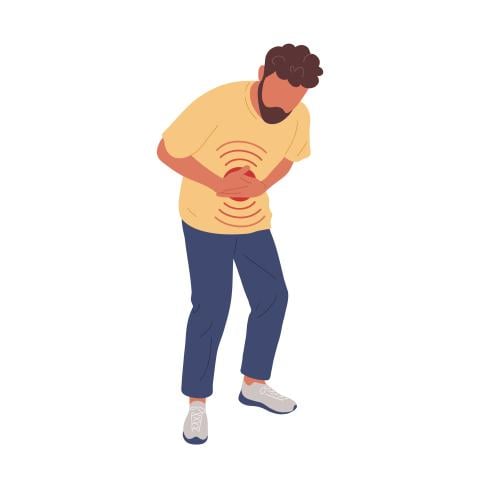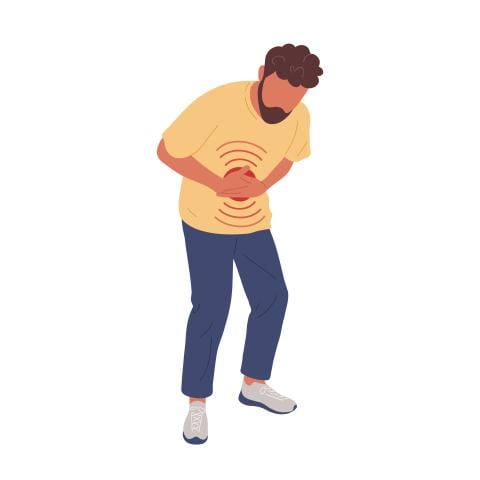Perfectionism and Panic
 Back in 2006, I had it all: A loving fiancé, a coveted publishing job, a supportive network of friends and family. I was living in Washington, D.C., where I went out almost every night to press parties and trendy restaurants. In my spare time, I delivered meals on wheels and counseled Alzheimer’s patients at the local senior center. Perfectionistic and ever so vigilant, I could’ve won the Perfect Life Olympics.
Back in 2006, I had it all: A loving fiancé, a coveted publishing job, a supportive network of friends and family. I was living in Washington, D.C., where I went out almost every night to press parties and trendy restaurants. In my spare time, I delivered meals on wheels and counseled Alzheimer’s patients at the local senior center. Perfectionistic and ever so vigilant, I could’ve won the Perfect Life Olympics.
Constant Fear and Anxiety
Behind the scenes was a different story: Over the course of my mid-twenties, I began to suffer debilitating panic attacks and intrusive cycles of thought. I worried constantly that I was on the edge of bankruptcy, or dying of cancer, or that my fiancé was about to be fired from his job. My fears and my panic kept me home from social events, caused me to fight with my fiancé, and led me to the emergency room with imagined heart attacks (where doctors inevitably looked at me like I had 10 heads).
I could never relax: I’d go out to a swanky dinner, all smiles and quips, and then rush home to check my bank balance for the twentieth time that day. Or I’d excuse myself to go to the bathroom so I could palpate an imaginary lymph node that I was sure was cancer. One thing was certain: I couldn’t enjoy the “perfect” life I’d tried so hard to create. (Many hours of therapy later, I’d realize that “perfect” was overrated. I wasn’t there yet.)
Honeymoon Fiasco
My problems culminated on my honeymoon trip to Hawaii. What should’ve been the most blissful time of my life turned out to be a complete fiasco. I spent the majority of the trip watching reruns and eating soggy takeout from the local burrito joint, terrified to leave the hotel room. I lost weight. I slept 20 hours at a clip. My heart raced constantly. Eventually, I just wanted to sink into my bed and cocoon myself. The outside world was too threatening, and nobody—not doctors, not my husband, not my friends (who thought my life was great!)—knew what I was going through.
Somehow my impossibly patient husband eased me back on a plane and got me home, where I continued my regimen of sleeping and watching bad television. I took a leave of absence from work, thanks to very understanding employers. So did my husband, because he was afraid to leave me home alone. I even had to spend a couple of weeks in my childhood bedroom, living with my parents, so my husband wouldn’t actually get fired (my worst fear come true!). The world was once my oyster; now, it was my prison.
Eventually, with the help of my husband (who couldn’t leave work indefinitely and who was tired of watching “Murder, She Wrote” with me), I saw a psychiatrist, who was the first person to actually give a name to my problem. I had panic disorder and obsessive-compulsive disorder, also called OCD. Finally, a doctor validated my worries instead of sending me home with a clean bill of physical health and more questions than answers.
Help From a Therapist—and ADAA
Through my job, I’d met Jerilyn Ross, a therapist who was the president of the Anxiety and Depression Association of America. I’d helped her edit a manuscript, and we kept in close touch. I had no idea that an association such as ADAA even existed; I’d known Jerilyn only as a talented writer and a vivacious voice on the other end of the telephone. I was delighted to discover an organization devoted to people like me—finally!
But I was frustrated that I hadn’t learned about it sooner. Which is why I wanted to work with ADAA: I was determined to put a natural, human face on such a misunderstood constellation of problems. So often, people who suffer from anxiety are laughed at as weak or neurotic. I’d like to think we’re actually pretty strong: It takes a lot to silently control a ping-ponging mind. I wanted to give a voice to people who were suffering quietly, spending their nights in emergency rooms or grasping for excuses to avoid one more office happy hour, because it’s easier just to hide at home.
Recovery and Recognition
So I wrote a story chronicling my experiences for the Washington Post, relying heavily on Jerilyn’s expertise. The response was extraordinary. Through that, I was asked to appear on the "Today" show to talk about young women and anxiety. Today I’m a published author, writer, editor, and public speaker, where I share my story in the hopes that other people feel less alone
Which brings me to my final point: Thanks in large part to the support I received from ADAA and by finding the proper medication and therapy, I’m also mom to an adorable two-year-old son. There is no doubt in my mind that without getting the proper treatment when I did, I wouldn’t be a successful writer and mother. (I might, however, be in the Guinness Book of World Records for most episodes of “Friends” watched in a single sitting.) My life isn’t perfect—if it were, I’d be six feet tall and writing to you from a seaside retreat in France—but finally, it’s pretty darn close.
Kara Baskin writes The 24-Hour Workday, a column for about balancing career and family and she contributes to the New York Times series on anxiety called "Why We Worry." She is also writing a book about anxiety.














